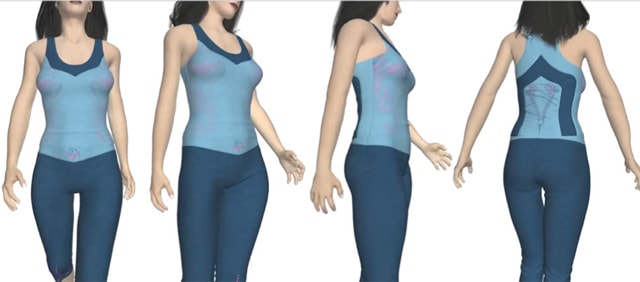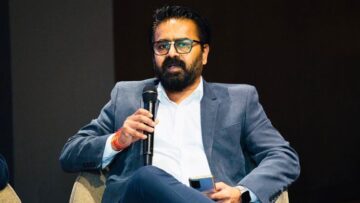
Riding high on the wave of consumer preference and confidence are the activewear and athleisure categories, poised for extremely dynamic growth. ‘Athleisure’ has become a buzz word for the fashion industry which has rocked the fashion world in recent years by taking stretchy leggings and neon crop tops out of the gym and into everyday life. Athleisure is not just another trend in sportswear, instead it is ‘A’-‘T’echnological-‘H’ardy-‘Leisure’ lifestyle that is an outcome of increased health consciousness across the globe, and a cultural shift in the workplace that has made it more acceptable to wear T-shirts and yoga pants to the office. This relaxed standard of clothing has been largely driven by the millennials in the US where 28% of the population uses such clothing. India too is emerging fast when it comes to using this trend, however, there are certain challenges as far as the Indian market for activewear is concerned. Team StitchWorld finds out how India can tap the full potential in the athleisure market in the coming years.
Inception of activewear in India
Way back in 1980s, an attempt was made to launch the first sportswear brand in Mumbai but it failed to reach the consumers’ expectations. Many brands came and vanished over the years. A few are still continuing despite facing stiff market challenges. But things took a positive turn when the United Nations General Assembly (UNGA) declared 21st June as an International Yoga Day in 2015. As a result, the country has been witnessing tremendous rise in yoga and outdoor activities. This sudden shift of the Indian consumers towards athletic and leisure activities is undoubtedly driving the domestic brands forward.
| Growth Statistics of Athleisure Market in India | |
| Year | CAGR |
| 2009 | 0.28% |
| 2011 | 0.40% |
| 2013 | 0.56% |
| 2015 | 0.85% |
| 2017 | 1.30% |
However, the Indian manufacturers are now thinking and working proactively to match the global growth pattern in the athleisure category. One such manufacturer is Paragon Apparels which has forayed into the market under its own brand Alcis. According to Roshan Baid, MD, Alcis, “Till now most of the market has been dominated by the foreign brands whose prices are not affordable for the regular Indian customers. Their designs also cater to the premium segment of the customers. India is much beyond that. We need to cater to the Indian taste and Indian colours.”Though things are changing, still there is a long way to go for the Indian athleisure market. The biggest growth barrier for the domestic brands is the reach of the overseas players such as Nike, Adidas, Reebok and Puma in the Indian market as these brands have more than 80% market share and rest 20% is being shared by the domestic players.
Endorsing the same issue, Mohit Singhal, Owner, Aurro Sports, opines, “The overseas activewear brands in India are getting benefits despite having high prices because they are not seeing any competition from the domestic brands.”
Sanchit Khurana, Founder, Pace Athletica also goes with the same opinion and adds that not just cost, but also marketing of products in India to penetrate the market, holds the same level of challenge.
All these three mentioned manufacturers are determined to reduce their cost of operations to become cost-competitive in the Indian market. They are reducing the margin of products to make a stable place for their products. Apart from this, they are investing in technology to increase productivity and reduce human intervention.
Education and availability of raw material is the key
Amidst the tug of war between domestic brands and overseas brands, two key points should be well considered. First, the Indian athleisure brands need to reach rural market and small cities by educating the young generation on various kinds of sports as well as yoga in order to enlarge the activewear market size. Simultaneously, they need to train their own workforce too so that they can keep pace with the latest technologies used in the manufacturing of an athleisure product.

Secondly, the Indian manufacturers need to develop raw material suppliers locally for different fabrics and trims required for manufacturing their activewear products without compromising on the quality.
However, as far as training of workforce is concerned, many of the athleisure manufacturers have started this practice lately. “We have trained 2,000 women who are working on polyester fabrics and product innovation,” claims Roshan.
On the other hand, Bhupinder Singh, Head Creation Centre & Sourcing, Wildcraft India pointed out that Wildcraft is addressing the product development through “creative workshop” where they train the manpower to collaborate textile, product, industrial, chemical and other aspects of engineering to innovate a product through use of a case scenario, keeping the comfort of human body at the core.
Need to embrace fabric development
The biggest growth impediment is undoubtedly the lack of high-quality polyester processing facilities in India as despite 1.30% CAGR growth projection in athleisure market in India, the road seems to have stopped for the country when it comes to quality synthetic fabrics. Since India is traditionally a cotton-based country, the need of polyester processing facility is a must if it wants to carve out a separate identity for itself in athleisure products.
“3D technology tools are not trustworthy enough to accomplish the goal.” – Dr. Evridiki Papachristou, Fashion Engineer I Research Associate I 3D Expert, Technical University of Crete, Greece
As a matter of fact, it is necessary to mention that more than 90% of synthetic fabrics is being imported by India from China, Korea and Hong Kong. When it comes to athleisure product manufacturing, the fabrics need to have breathability, sweat reduction, stretchability, moisture control and a property which prevents the growth of odour-causing bacteria and fungi. With these properties, the products become unique, provide additional comfort to the wearer and the used fabric retains the shape of the garments even after being stretched to an extent.

As far as fabric development for activewear is concerned, Graphene is seen as the next big thing in performance fabrics. Spider silks are creeping closer to commercialization although they are yet to reach full potential. According to Dr. Evridiki Papachristou, Fashion Engineer I Research Associate I 3D Expert, Technical University of Crete, Greece, Spidroin – a spider silk protein, is more resistant and stretchable than sericin and has been developed with biotech methods by most of the start-ups other than India in this area. “Advanced thermoregulation is important for the wearer’s comfort and the suppliers are exploring new opportunities and new combinations of thermoregulation fibres like wool and silk nowadays,” says Evridiki.
However, India is far behind when it comes to adopting the above mentioned fabric developments. “There has to be certain advanced technical features in athleisure clothing to make it comfortable and convenient for the wearer because to manufacture such products, traditional technology and materials will not suffice to bring out as appropriate,” says Bhupinder, adding, “But, unfortunately India does not use these kinds of fabrics until now.”
With regard to Alcis, Roshan Baid comments that the technology offerings in fabrics are becoming so sophisticated that, irrespective of customer requirements, any polyester garment coming out of the manufacturing unit is now incorporated with moisture management and antistatic finish.
According to the manufacturers, it is synthetics that will drive the athleisure and activewear market, however recyclable and biodegradable polyester and different blends of natural fibre and ingredients will drive the environment friendliness index.
Technology is emerging slowly but steadily
All the technologies in fabric development would require more samples to test the desired and appropriate fit on the customer’s body shape and type. Athleisure will continue to explore new fabrications and since its origin is the best performance in fit, technologies like 3D virtualization and 3D body scanning will play a significant role in this category’s product development.
However, according to Evridiki Papachristou, although 3D technology providers claim that using their software, the creative team can eliminate the need for the physical sample, these tools are not trustworthy enough to accomplish that goal. On the contrary, Evridiki opines that athleisure clothing companies or brands who enter the athleisure market should study the successful stories of brands who have been working with 3D prototyping for many years and learn from their journey. “It is a learn-on-the-go process depending on the effort and the vision that the upper managerial executives have for the brand and their creative team. The culture shift is another parameter that needs time and sometimes is not even close to the required minimum for the 3D technology to show results,” avers Evridiki.
Not just fabric unavailability and fit issues, the lack of operators’ technical skills in handling special machines which are used to manufacture athleisure products is also denting the growth speed of activewear market in India. In the present era, athleisure products are largely being made by using seamless operations such as welding and bonding though very few of the Indian manufacturers are using seamless machines.
Mohit avers that the use of technology is a must if India wants to surpass the market share of overseas brands.
“We use hot air welding machines and ultrasonic welding machines which enable us to manufacture high-end garments with seamless welding and bonding technology, thus eliminating fraying of fabric and chances of irritating seams,” claims Mohit as his brand Aurro Sports is setting an example by using the appropriate technology that is the need of the hour in the Indian market for athleisure products.






